Recent Fire Damage Posts
There was a fire next door. Should you worry?
8/5/2022 (Permalink)
A house fire, especially a serious one, can be a really terrifying thing.
Within a very short timeline, your home can go from a safe, comfortable place to a dangerous, uninhabitable environment.
What many people don't realize is that house fires affect more than just the houses where they start.
Smoke, soot and other forms of damage can easily affect neighboring homes as well.
As smoke pours out of the source unit, it doesn't necessarily just go straight up into the sky. It can migrate to nearby structures, get blown around, and cause serious secondary damage throughout the neighborhood.
Often, this damage is most pronounced in the form of odor. Even when the restoration is totally complete on the source unit, neighboring people may notice that they still detect a smoke odor in their own homes.
Sometimes, this is psychological - they're so used to smelling smoke that they can't shake it. But often, it's a sign that the neighboring home may need some level of cleaning and restoration as well.
How common are cooking fires?
8/5/2022 (Permalink)
Every single day, fire departments respond to a wide variety of emergencies in the communities that they serve.
Out of all of the fires that they respond to, the bulk will be cooking fires.
Kitchen fires are by far the most common types of fires that occur in the United States and throughout the world. It's no surprise as to why - we use our kitchens every single day, and we're usually using some form of heat or open flame to cook food.
If something goes wrong, the consequences can be deadly.
According to the National Fire Protection Association, there were over 172,000 fires caused by cooking in the US from 2014 - 2018. These led to over $1 billion in property damage and around 550 deaths.
Why do things go wrong in the kitchen? Usually, the culprit is not paying attention. Unattended cooking fires are the bulk of the problem.
What is Firematic racing?
7/14/2022 (Permalink)
If you’ve lived in Western New York for a little bit, then you’ve probably seen signs or heard advertisements for something called “Firematic” racing.
Many people from out of town, and even many people right here in the Buffalo area, have never heard of this type of competition.
Apparently, it’s vastly more popular in New York state than anywhere else in the world – who knew?
But what actually is Firematic racing? And who can get involved?
Firematic racing (sometimes also referred to as drill team racing) is a competition between firefighters, usually from different fire companies.
The competitions are designed to test the participants’ firefighting acumen by putting them through a series of firefighting drills, usually for time.
Usually, there’s a distinction between two types of competitors: old-fashioned and motorized.
Old-fashioned competitors will complete the drills on foot, and to the extent that they use any specialized equipment at all, it’s all under manual power.
Motorized competitors, on the other hand, take full advantage of modern technology and often use specialized Class-B or Class-C “racer” trucks.
Despite the difference in technologies, both divisions usually compete in similar events that involve running and operating fire hoses, placing ladders, and the “Bucket Brigade,” a race to use buckets to fill a large drum.
Why is odor so persistent after a fire?
7/14/2022 (Permalink)
When most people think of the consequences of a serious fire, they probably think of total destruction: charred, burnt-out structures that have caved in on themselves with very little left to save.
In reality, most fires are not total destructive losses, and restoration is possible. While the restoration process is not simple and can sometimes take years to complete, the end result is a home restored to preloss condition in an efficient and cost-effective way.
Despite the fact that the home might look basically like new, however, there’s one problem that has a tendency to linger in many people’s minds: the odor.
Smoke odor is a difficult thing to eliminate. On one hand, soot can be invisible to the naked eye and can potentially settle anywhere and everywhere inside a structure.
Often, though, people will complain of an odor even after soot has been eliminated.
The issue is in our brains. Smell is the sense that’s most closely associated with memory, and if we walk into a structure with that memory on our minds, or if we expect to encounter the smell of smoke, then we’re very likely to think that we detect an odor, even when nobody else does.
Our goal when we clean smoke and soot, then, is not only to eliminate the source of odor, but to provide an environment that feels clean, inviting, and odor-free.
Duct cleaning after a fire
6/21/2022 (Permalink)
One of the last steps that we often take after a fire is cleaning the air ducts. It’s often the finishing touch after a lengthy, in-depth fire and smoke restoration project that makes the home or business safe to inhabit again.
Why do we always clean the ducts?
Your HVAC system is the most efficient transporter of smoke, soot and residue in your home. It takes in air and circulates it all throughout the building, and it just isn’t up to the task of filtering out the harmful environmental pollutants that are created by your average house fire.
This goes double if you inadvertently operated the HVAC system after the fire. Without realizing it, you spread those pollutants all over your home, and all throughout your duct system.
Because of these reasons, and many more, we have specialized duct cleaning equipment in-house that we use to keep you safe. We’re always here to help!
Why do lithium-ion batteries start fires?
6/21/2022 (Permalink)
You’ve probably seen in the news plenty of reports of lithium ion batteries exploding or catching fire without warning.
To a degree, these reports are misleading. The vast majority of lithium ion batteries are safe and will never cause you any problems.
But that doesn’t mean that there’s absolutely no risk, either. Here’s why.
Inside every lithium ion battery, there are two electrodes. One is positively charged and one is negatively charged, and they are separated by a very thin piece of plastic. The reaction between these two electrodes, the other components and the electricity flowing through the battery is what gives lithium-ion batteries such incredible storage and recharging capacity.
But it’s that same technology that also gives them the capacity to explode. If the plastic separator fails, then all of the energy stored in the battery gets released in a single jolt when the electrodes touch. That leads to a huge discharge and potential disaster.
Again, these batteries are getting safer and more effective every day. But it’s interesting to note that what makes them so effective is also what causes fires.
What's So Bad About Soot?
7/11/2021 (Permalink)
Where there’s smoke, there’s fire. And there’s also soot, which can actually be one of the most tedious and difficult to deal with aspects of fire damage cleanup and restoration. Despite its appearance as black dust or dirt, soot is chemically different than any regular soil that you’d encounter in your home, and it takes a professional to deal with it effectively.
How can you recognize soot? Usually, it’s brown or black and powdery. It’s what makes something that’s been exposed to fire look charred, but it can also fly around your home and settle on things that were not seriously damaged by the flames.
In fact, soot is made up of the things that were burned by the flames. It’s the leftover particles that were not totally combusted. To that end, not all soot is the same - its qualities are dependent on what was actually burned.
Because of that, the cleaning process for soot is also very dependent on what was actually burned. The chemical composition of burnt plastic, for instance, varies greatly from that of burnt proteins, and must be handled accordingly.
No matter the type of soot, though, you don’t want it in your home. The presence of soot, even if it isn’t obviously visible, can lead to drastically reduced air quality, which in turn can lead to serious health effects. If you have soot in your home, don’t take any chances - leave the cleaning to the professionals.
Why Hire IICRC-Certified Fire Restoration Technicians?
7/11/2021 (Permalink)
We heard an interesting story the other day about a fire damage cleanup that we’d like to share with you (without naming any names, of course).
A fire recently swept through a lovely apartment building. While the fire itself was contained to a single unit, the smoke from the fire infiltrated hallways, common areas and apartments throughout the building.
The property manager hired what she thought was a professional fire damage restoration company. As it turned out, this company relied mostly on temporary labor, overseen by managers who spent most of their day herding cats instead of strategically approaching their restoration projects.
After the cleaning was done, the property manager was disappointed to find that the apartment still reeked of smoke. While she did not visually see any remnants of the fire, she had a bad feeling that she’d been given a raw deal. So she called SERVPRO.
During the initial walkthrough, it didn’t take our manager very long to shake his head and ask whether the cleaners had been IICRC-certified technicians or temporary workers. The property manager confirmed that they were temps, and asked how our manager knew.
“Simple,” he said. He lifted a framed photo off of the wall - behind it was a rectangle of heavy soot. No one had bothered to tell the temps to clean behind the photos, so they hadn’t. The property was still infested with soot particles - just none that you could see without a proper investigation.
It’s so important to trust your fire damage restoration to a reputable company that employs certified technicians. With restoration, it is very easy to cut corners in ways that aren’t always immediately obvious. The consequences of that kind of poor workmanship, however, can be deadly serious.
Furnace Puffbacks: Sometimes Silent, Always Dangerous
7/11/2021 (Permalink)
We’d like to share a story about a very dangerous situation that we ran into recently.
A wonderful woman (let’s call her Jean) lived alone in her home, with her adult children living nearby.
Every time her children came over, they would express surprise that their mother (who had always kept a spotless home) was allowing her house to become so overrun with dust.
“I can’t keep up,” she told them. “I dust every day - it just comes back.”
Nobody thought much of it until one day, her son walked in to find his mother passed out on the floor. He rushed her to the hospital, where she was diagnosed with severe respiratory issues and barely made it out of the ICU.
After some investigation, the son found out that the dust they’d been commenting on was not dust at all - it was soot. His mother’s newly installed furnace had been improperly set up, and for over a year, it had been venting noxious fumes and toxic soot into her house every time she turned it on.
The problem was soon rectified, and appropriate actions were sought against the installer. The next step was to call SERVPRO of West Seneca/Lancaster to clean up the mess - a cleanup that turned out to be fully covered by his mother’s homeowners insurance.
Today, Jean is in excellent health and back in her home. But let her story be a lesson to you - if you have any reason to suspect that soot is building up in your home, or that your furnace is puffing back, do not wait to seek professional guidance. Your health may depend on it.
Is Arson Covered by Insurance?
7/11/2021 (Permalink)
Here’s a question that we hope that you never have to ask yourself: is arson covered by my homeowners insurance?
The sad fact of that matter is no - in most cases, your insurance will not cover a fire that was set maliciously by another party. We’ve run into plenty of cases where fires have been caused by spurned romantic partners, disgruntled employees and bored kids, and insurance coverage has always been notoriously hard to come by for the victims.
Insurance carriers have a good reason for denying claims related to arson: it eliminates the incentive for people to set fire to their own homes, or to pay someone to do it.
That said, there have been cases in the past where insurance carriers will deny a claim simply on the suspicion of arson, without solid evidence that arson actually took place. In situations like this, the homeowner’s best bet is to work hand-in-hand with the fire department’s investigator to gather evidence and build a case of their own. They may even want to hire an independent investigator to help them. By presenting this evidence to the insurance carrier and insisting on fair treatment, they stand the best possible chance of getting their loss covered.
Emergency Board Ups After Fires
7/11/2021 (Permalink)
When a fire strikes your home or business, the first order of business is of course to put the fire out and guarantee the safety of the occupants.
Often, the second order of business is to secure the premises. Fires can be enormously destructive, blowing out windows and creating access points where none existed previously. Fire departments may also need to force entry into the structure to put the blaze out, which can leave windows and doors wide open after the job is done.
In a situation like this, it’s important to get an emergency board up immediately. A board up is exactly what it sounds like - all of these breached access points are quickly covered in wooden boards to prohibit unwanted entry.
Even if a structure is totally gutted and you think that nothing of value remains, it’s important to secure it with a board up. The last thing you need is a lawsuit because someone was able to access your building and then got hurt.
If you need a board up, 24/7/365, call SERVPRO of West Seneca/Lancaster. We’re here to help.
How Does Ozone Help With Fire Damage Restoration?
7/11/2021 (Permalink)
One of the most difficult things to accomplish in fire damage restoration is not cleaning up the water, nor the debris, nor the smoke and soot damage.
Often, the biggest hurdle is getting rid of the odors that the fire left behind. These odors have a tendency to linger because the particles that cause them can be microscopic. They’re invisible to the naked eye and can hide just about anywhere in your home without you ever noticing.
That’s where technology like ozone generators comes in. With a lingering smoke smell, an ozone generator can be just what the doctor ordered.
Ozone generators work by generating molecules with three oxygen atoms (as opposed to the two oxygen atoms that we’re accustomed to in the air that we breathe). These atoms are highly reactive. When they encounter odor-causing molecules (as in those in smoke residue), they oxidize them and eliminate the scents.
That said, ozone is not a magic wand. The most effective way to deal with an odor is to eliminate the source, and the bulk of that work is done through thorough, effective and scientifically-sound cleaning.
Ozone can also be dangerous. Exposure to ozone can cause nausea, headaches and worse, so all living things must be evacuated before we use it, and proper containment must be set up to prevent it from proliferating throughout a home. While regular levels of oxygen are quick to return once the ozone generator is turned off, we often combine high-velocity air movement with ventilation to ensure that the area is safe to return to before clearing it for occupancy.
Cleaning Furniture After a Fire
6/25/2021 (Permalink)
If you’ve suffered a serious fire at your home or business, then you know that one of the most difficult things to deal with after the fact is the soot and the smoke. Soot can stain your structure and your contents, and the odor can be pervasive even if you can’t see any visible staining.
For this reason, most people assume that their furniture will be a loss after a fire. After all, if they can’t even get the smell out of the walls, how could they expect to get it out of an armchair?
It’s true that, much of the time, furniture must be replaced if it has been exposed to significant levels of fire, smoke and soot. Often, though, our trained team of furniture cleaners can make that damage “Like it never even happened.” Here’s how we do that.
Upholstered Furniture
Upholstered furniture is extremely difficult to clean if it’s been exposed to smoke. Even if it looks clean, it still might contain particles of smoke and soot that it will continuously release into the air over time, causing a lingering odor that can be difficult to pin down.
The key with upholstery is care and precision. Soot must be carefully vacuumed so as not to spread or smear the particles. All removable covers should be washed separately. What remains can often be cleaned using our proprietary upholstery cleaning machine. If we make an attempt and the furniture still is not cleaned to our standard or your satisfaction, then we will likely recommend that it is written up as a loss and replaced by your insurance carrier.
Leather Furniture
Unlike upholstery, leather cannot be wet cleaned, and you must be extremely careful not to scratch it. When we vacuum up soot, we likely won’t even make direct contact with the leather out of caution.
Once soot has been vacuumed, then we will employ one of our in-house leather cleaning products, which have been specially formulated to clean leather after disasters.
Wooden Furniture
Technically, wooden furniture is the simplest to clean, but that doesn’t mean it’s easy. Soot should be vacuumed and a wet cleaning process will usually follow. After that, we’ll use one of our proprietary wood polishing and conditioning products to return your wooden furniture to preloss condition.
Our best advice is this - if you’ve suffered a fire, don’t handle the cleaning on your own. Getting it wrong can make the damage worse, if not permanent. Give us a call - we’re here to help.
Cleaning Electronics After a Fire
6/25/2021 (Permalink)
Did you know that smoke, soot and fire can cause invisible damage to your high-end electronics?
If you’ve suffered a fire in your home, you’re likely preoccupied with the most obvious, visible damage to your structure and your possessions. Often, unless they’ve been seriously charred or melted, electronics can look like they made it through the fire unscathed.
Unfortunately, that is not always the case. Here’s how electronics get damaged in a fire, and here’s how to clean them.
How are electronics damaged in a fire?
Obviously, if your television set melted, it’s been damaged by the fire. We won’t bother going into that.
Sometimes, though, the damage is not so obvious. Heat, smoke and soot can lead to a variety of issues, including:
- Corrosion: soot can be acidic, and if it finds its way inside your electronic devices, it can corrode key components without you realizing.
- Insulation: a coating of soot is actually a very effective insulator for heat. This is bad news for electronic devices, which can very easily overheat if they’re not able to cool themselves properly.
- Magnetization: smoke can sometimes carry a magnetic charge, which can short-circuit certain types of electronics. While many devices have protections against magnetization these days, it can still happen (remember when you could wipe out a hard drive or a credit card with a magnet?).
How do you clean and restore fire-damaged electronics?
First, you try to determine if it’s even worth trying. If your electronics were exposed to extreme heat and damaged, then it’s probably wise to just call them a loss and see if your insurance carrier will replace them.
If they haven’t been damaged in this way, though, you stand a chance of restoring them.
First things first - disconnect the device from the power source if you think it has sustained smoke damage. That will prevent it from short-circuiting or causing further damage.
Wipe down the exterior with a soft rag and see if that deals with the soot damage. If you have compressed air, use that to clean out the openings, ports and crevices.
Past that, you’ll need to involve an expert. If there was serious smoke damage, there may be significant levels of soot inside the device itself. Unless you’re a professional electronics restorer, you probably lack the skills to dissemble, clean and reassemble your device effectively.
If that’s the case, give us a ring. We’re here to help.
Summer's the Perfect Time for Fire Safety!
7/9/2020 (Permalink)
 Summer's the time to teach your children about fire safety.
Summer's the time to teach your children about fire safety.
No season is a good season for a house fire, but summer is perhaps the best season to educate your family on fire safety. With kids out of school and families spending more time at home (especially with the current quarantine situation), there’s no reason why you shouldn’t take an hour or two to talk fire safety in the evening. After all, you’ve probably talked about just about everything else under the sun, and finished everything on Netflix – what else do you have to do to kill the time?
Your fire safety discussion doesn’t have to be a long, involved ordeal. In fact, there are just a few basic things that everyone in your home needs to know to stay as safe as possible in the unfortunate event of a house fire:
- Everyone, especially children, should know exactly what your smoke and carbon monoxide alarms sound like when they go off;
- Everyone should also know what to do when those alarms go off;
- Teach each member of your family two ways to escape from each room – usually a door and a window;
- Establish a designated meeting point and communication plan so everyone knows what to do when they get out of the house;
- Run fire drills at your home at least twice per year;
- Show children how to dial 9-1-1 and teach them what to say to an operator;
- Finally, make sure everyone knows how to stop, drop and roll!
Sure, going over all of this information is no one’s ideal summer evening, but it could save someone’s life. Plus, it can be kind of fun to pretend to stop, drop and roll if you get into the spirit of what you’re doing!
And if you do have to deal with a home fire, don’t forget that we’re here to help at SERVPRO of West Seneca/Lancaster – just call 716-674-1103 when you need us.
Gas Grill Safety for the Summer
7/9/2020 (Permalink)
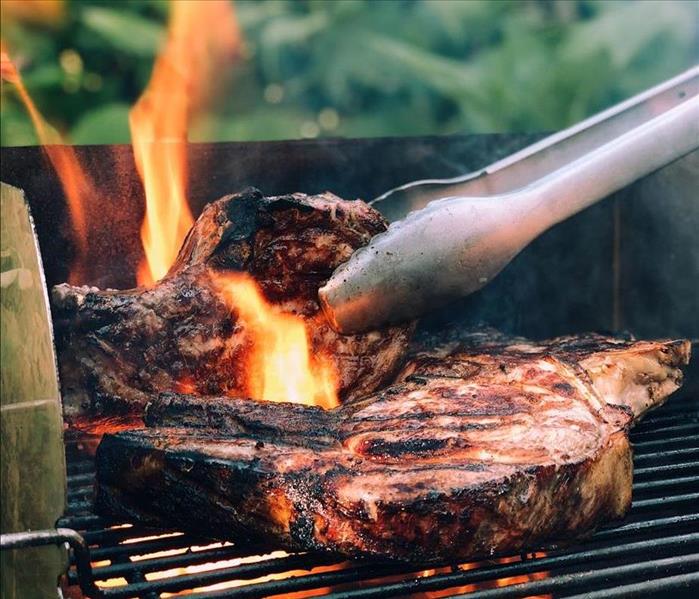 Nothing beats grilling in the summer - just stay safe.
Nothing beats grilling in the summer - just stay safe.
It’s summertime, and at the time of writing, we’re approaching heat indices of over 100 degrees here in Western New York. Nobody wants to get stuck in the kitchen in that kind of weather, so many people are either ordering takeout or firing up the grill in the backyard. And while everyone loves gathering around the grill and flipping burgers, you have to remember that gas grills can be a huge fire hazard if not handled safely.
How do you grill safely? We’ll tell you.
Propane Tank Safety
The propane tank is a big potential hazard, especially since many people rent their tanks from gas stations and convenience stores. Those tanks are not always thoroughly checked and repaired before they’re rented back out, which can lead to issues for home grillers.
Check your tank before use for damage, wear, rust and dents. If you find damage, do not use that tank. If you’re filling the tank yourself, you should also be sure that you don’t overfill it.
Even if your tank isn’t damaged, you should still be careful with placement. Keep the tank at least 10 feet away from anything combustible and keep children away from it as well. When not in use, keep the tank outdoors an in upright position, but move it away from your grill just to be safe. You should also ensure that the valve is turned to the “off” position.
Gas Grill Safety
Before you start to cook, make sure your grill has no gas leaks. To check, spray soapy water on the grill fitting and switch the gas on. If you see bubbles forming, that means there’s a leak and that you should refrain from grilling until it is fixed. Even if the grill fitting is fine, there may be leaks on the hose – check there as well.
Make sure your grill is clean before you fire up the flame. Everything from old food grease to dead bugs can cause blockages in your grill, which can lead to serious issues as you cook. The grill should be set in a level, well-ventilated outdoor space to ensure proper circulation. If you have proper ventilation and you still smell gas, get away from the grill, grab a fire extinguisher and call the fire department – you might have a leak on your hands.
Hopefully, by following these tips, you’ll prevent any issues with your gas grill. However, if you’ve got fire or smoke damage stemming from a grill fire, we’re here to help – call SERVPRO of West Seneca/Lancaster at 716-674-1103 today!
Restoring Your Ducts & HVAC After a Fire
7/9/2020 (Permalink)
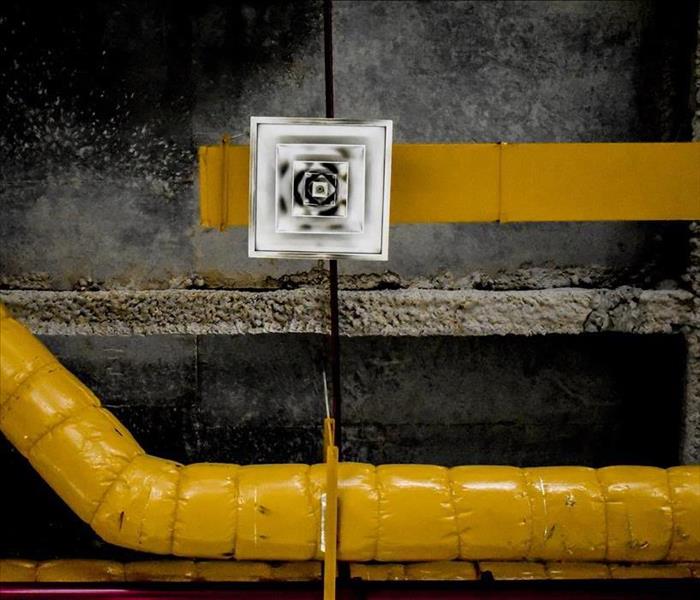 Lingering smoke odor? It might be in your ducts.
Lingering smoke odor? It might be in your ducts.
Imagine a fire in your home. Terrible, right? You’re probably imagining flames on the wall, smoke pooling on the ceiling, and soot on the floor after the fire’s put out.
Now imagine fire restoration and cleanup like we provide at SERVPRO of West Seneca/Lancaster. You’re probably imagining technicians with scrub brushes cleaning up the soot, picking up the debris and reconstructing the damaged areas.
Sure, all of that can happen. But we don’t just stop at what’s visible on the surface. We go deeper to ensure that your home or business is returned to preloss condition. And one of the places where we focus in particular is your HVAC and duct system.
Why focus on ducts after your fire?
Why do we pay so much attention to ductwork, air registers and HVAC units after a fire? Because these are places where soot can spread unseen. They’re also potential sources of lingering smoke odor, which can be enormously difficult for homeowners to eliminate on their own. By cleaning these systems, we prevent soot and odor-causing particles from circulating throughout the house and contaminating areas that may have been far away from the fire itself.
Aside from smoke and fire damage, ducts can also be potentially damaged by water as well. When a fire department cranks up their hoses to extinguish some flames, it’s inevitable that water will get all over your home or business. That moisture can easily get inside your ducts, promoting mold and mildew that are hidden from plain view and compromising your indoor air quality. We don’t just restore fire damage – when necessary, we lead the industry in restoring water damage after a fire as well.
When you need restoration, cleanup and repair after a fire, you have plenty of choices. Why choose SERVPRO of West Seneca/Lancaster? Because the attention to detail that we pay to your ducts and HVAC system is the same attention to detail that we pay to your entire property. If you want to make your fire “Like it never even happened,” call us today at 716-674-1103.
8 Emergency Tips After a Fire
7/9/2020 (Permalink)
 Fires are traumatic. Take care of yourself and your loved ones.
Fires are traumatic. Take care of yourself and your loved ones.
Fire damage can be devastating in a home or business. The resulting water damage from extinguishing the fire just makes things worse. Because of all this stress, it can be extremely difficult to act rationally immediately following an emergency. Emotions run high and it’s very easy to make a mistake that can have lasting consequences. That’s why we’ve come up with 8 emergency tips for you to follow right after your fire and water loss. Before we get there, keep the following in mind:
- Get permission from the fire department before you attempt to re-enter the home.
- Inform your utility, insurance and restoration companies of the fire.
- To the best of your ability, try not to move around your home too much. No matter how careful you are, it can be very easy to spread soot particles and cause additional damage, as well as cause smoke smell to linger longer in rooms that may have been far removed from your fire.
- From whatever vantage points you can access, photograph and document the damage.
- Remove the contents of affected areas as soon as you can. If possible, get them outside into the sun so that they can air out and dry if necessary.
- If your power is out, empty your freezer and refrigerator and keep the doors propped open. Try to find another home for anything perishable before it begins to spoil.
- Extract any water that you can by mopping and blotting. The more water you can get out, the simpler and more affordable the restoration process will be.
- Take care of yourself, your loved ones and your pets. Fires can be an extremely traumatic experience.
If you’re dealing with a home or business fire in the West Seneca or Lancaster area, give us a call 24/7/365 at 716-674-1103 – we’re here to help!
At-Home Fire Drills Save Lives!
7/7/2020 (Permalink)
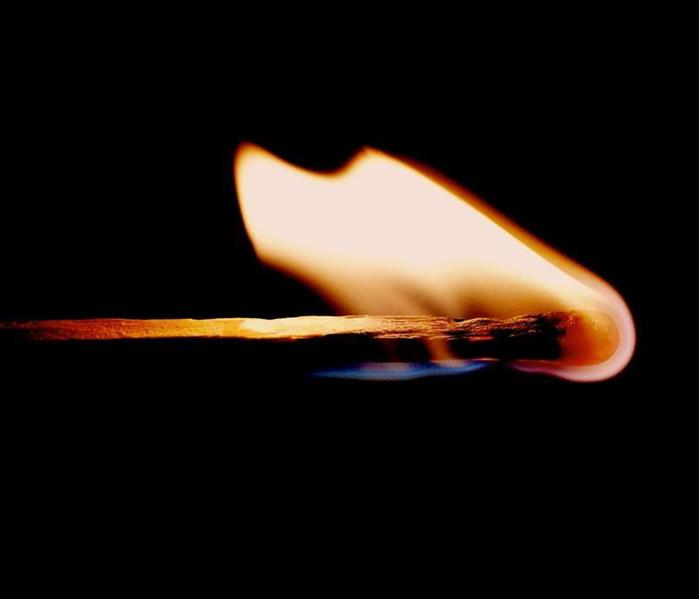 Does your family have a fire plan?
Does your family have a fire plan?
Remember doing fire drills in school? If you were like most kids, you probably got sick of them pretty quickly. “Why do we have to practice walking out the door?” you might have asked. “Anyone capable of thinking knows to get out when there’s a fire.”
Here’s what you probably didn’t realize as a kid: not thinking is the point. You need to be able to act fast in an emergency when you don’t have time to think. Having a fire drill once a month for 12 years enables you to do that.
You should have a family fire plan for the same reason. If there’s a fire in your home, every member of your family member needs to know what to do without thinking or communicating with the others. Since many of us are still quarantined at home for the moment, right now is the perfect time to sit down with your family and hash out a fire plan. Here’s how you do that:
- First things first: install smoke alarms in every sleeping room, outside each sleeping area, and on every level of the home. Advance warning from an alarm is key to getting out of a fire unscathed.
- Test those alarms on a regular basis.
- Draw up a map of your home that shows all doors and windows.
- Find two ways out of every room. Ensure that all doors and windows open easily.
- Designate a meeting place in front of your home so everyone knows where to find each other.
- Save the fire department’s phone number in everyone’s phone.
- Review the plan, in detail, with everyone in the family.
- Practice!
While holding your own fire drill may not sound like your idea of lockdown fun, it could save lives, and it shouldn’t take too long to do.
Preventing and Putting Out Grease Fires
7/7/2020 (Permalink)
 Cooking is fun... until it isn't.
Cooking is fun... until it isn't.
Kitchen fires make up a huge percentage of house fires every year, and grease fires are one of the most dangerous types. If you cook at home (and who doesn’t?), you need to know what to do to prevent and put out a grease fire if it happens to you. The tips below could just save your life.
How to Prevent a Grease Fire
The key to preventing grease fires is being clean and being attentive. As long as you’re a conscientious home cook, you should have no problem preventing a grease fire from becoming an issue.
First, make sure your stovetop is clean and cool before you start cooking. If there are any spills, wipe them up before you start heating anything.
You also need to know your cooking oils. Some oils can take more heat than others when cooking. If you see smoke coming from you cooking oil, remove the pan carefully from the heat source so that the oil can cool down a bit before continuing.
Avoid heating oils too much before dropping food into the pan. When you do put food into the pan, use a utensil that allows you to place the food carefully onto the cooking surface without a big splash, like a pair of tongs.
If you’re deep frying your food, make sure to use a container that’s big enough to fry your food without spilling oil. If you’ve never deep fried anything before, don’t go it alone – have an experienced cook show you the ropes.
If you do spill oil, carefully clean the spill up as soon as possible. You may need to remove food from the pan, turn off the heat and wait, but that inconvenience is preferable to a fire.
Finally, do not add water to grease – you’ll likely cause oil to splatter everywhere, which might cause a fire but will definitely cause a mess.
How to Put Out a Grease Fire
First, turn off the heat. You don’t want to make things worse and you definitely need things to start cooling down.
Whatever you do, DO NOT pour water on the grease fire. This might be your first instinct, but it’s the worst thing you can do. Water and oil do not mix – instead of putting out the fire, you will cause flaming oil to splatter everywhere, making things much, much more dangerous.
Instead, try to smother the flame with another pot or baking pan. If you can’t do that, dump lots of baking soda on the fire. If the flame gets out of control, get out and call the fire department – they’re here to help. And if you need help restoring your kitchen after your grease fire, give us a call at 716-674-1103 – we’re here to help as well!
Do's and Don'ts After a House Fire
6/10/2020 (Permalink)
 Fires are scary. Don't go it alone.
Fires are scary. Don't go it alone.
Even after the last flame has been put out and the smoke has dissipated, the scene of a house fire can be a dangerous place. While it’s understandable that you’d want to spring into action and do everything you can to get back to normal after a fire in your home, follow these do’s and don’ts to make sure that you’re both safe and effective in your response.
Do’s After a House Fire
Do wait for the fire chief’s permission before you reenter your home. Even if there’s no active fire, it still may not be safe to go back into your house, especially if there’s been any level of structural damage. Firefighters are specially trained to assess that threat – follow their lead
Do check with a professional before turning on any utilities, including water, propane and electricity. They’ll be able to verify whether turning those utilities on is safe or if you need repairs that might not be obvious to the untrained eye.
Do call a professional cleanup and restoration company like SERVPRO of West Seneca/Lancaster to help with getting back to normal. After a serious fire, it takes the tools, training and experience to accurately assess issues and fix them. Even something as seemingly simple as cleaning up smoke and soot is usually better left to the pros.
Do get a copy of the fire report from your local police department. It may be necessary and helpful if and when you decide to file an insurance claim.
Don’ts After a House Fire
Don’t just run back in as soon as you can to search for personal belongings and valuables. You’ve got to resist the urge to rush the process – your safety is more important than any material possession.
Don’t move your car if it was anywhere near the site of the fire. It may be damaged in ways that aren’t obvious upon initial inspection.
Don’t assume that all damage is visible. Even if you don’t see obvious damage to surface areas, there may be hidden damage that poses long-term risks for you and your family.
Finally, don’t go it alone! Between your fire department, your insurance agent and your professional restoration team, you should have plenty of people to call who have dealt with situations just like yours before. Lean on the experts, trust the process and everything should turn out “Like it never even happened.”
Is It Safe to Stay in a Smoke-Damaged House?
6/10/2020 (Permalink)
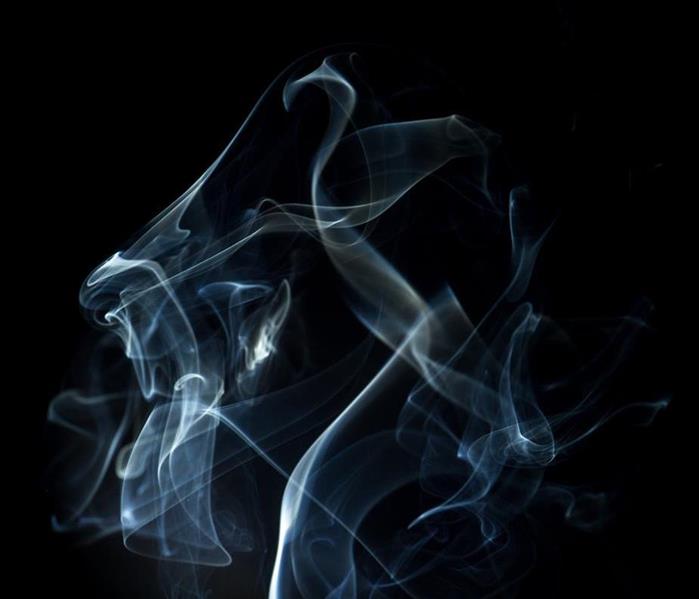 Smoke is a serious health hazard.
Smoke is a serious health hazard.
The fire in your house is over. The initial shock has worn off. The fire department is gone. To the naked eye, the damage doesn’t even seem as bad as you expected.
But is it safe to move back in? The short answer, usually, is no, no matter how minor or major the fire was.
Why is it so risky to get back in your house? We’ll explain.
Smoke Damage: Invisible Invader
When we think about fire damage, we tend to think about, well, the damage caused by the fire. We look at the things the flames burned and use that visual information to make judgments about how dangerous and serious a fire was.
That’s a mistake. Smoke damage might be more difficult to see, but it’s still extremely dangerous.
For one thing, smoke can pervade the house much more quickly and completely than flames often do. A kitchen fire stemming from the downstairs stove can easily waft not just to your upstairs bedroom, but also into your walls, throughout your heating and air conditioning ducts, into your furniture and even into your electrical system.
That smoke might not have even been visible during the fire. No matter how thick the smoke may have gotten, there are still smoke particles that aren’t visible, and its these particles that tend to pose the highest and most unforeseen risk.
Why is smoke so dangerous?
For one thing, smoke is not always easy to detect. If all you do is walk through your house looking for damage visually, you’ll never detect the extent of smoke damage that you can’t see.
For another, it’s important to remember that the smoke from a house fire is not the same as the smoke from a camp fire. Smoke is caused by whatever fuel fed the fire. It’s often greasy, which means that when it coats your home in soot and noxious odors, it can be enormously difficult to remove.
Past that, smoke tends to travel to cooler areas by whatever means necessary. Because of this property, it’s likely that smoke damage will occur in places far removed from the actual fire, and that it will get there through avenues like ducting, pipes, crevices and your electrical system which are not easily accessible or visible.
Long story short – smoke gets where you least expect it and it tends to stick around unless you work with a pro to detect and remove it.
What’s worse, smoke can be enormously hazardous to your health. While the severity depends on exactly what burned, smoke inhalation during a fire is known to cause everything from burns to your respiratory system to serious coughs to vomiting to confusion to death.
After the fire is put out, the byproducts of smoke can still be present inside your home. Toxins like tar and heavy metals can float around in the air, causing serious health issues over time. Even if you don’t get sick, it’s likely that you will find breathing difficult and that your lungs and sinuses may be negatively affected by the aftermath of smoke damage.
On top of that, the smell of smoke after a house fire is enormously unpleasant and has a tendency to attach itself to everything, from your walls to your floors to the clothes that you’re wearing.
So how do you deal with smoke damage and get back into your home? You call a professional fire restoration company like SERVPRO of West Seneca/Lancaster. We’re able to determine the full extent of your smoke damage and make a plan to clean it for good. If you’re dealing with smoke damage after a fire, call 716-674-1103 today!
Restoring Vs. Replacing Your Fire Damaged Items
7/15/2019 (Permalink)
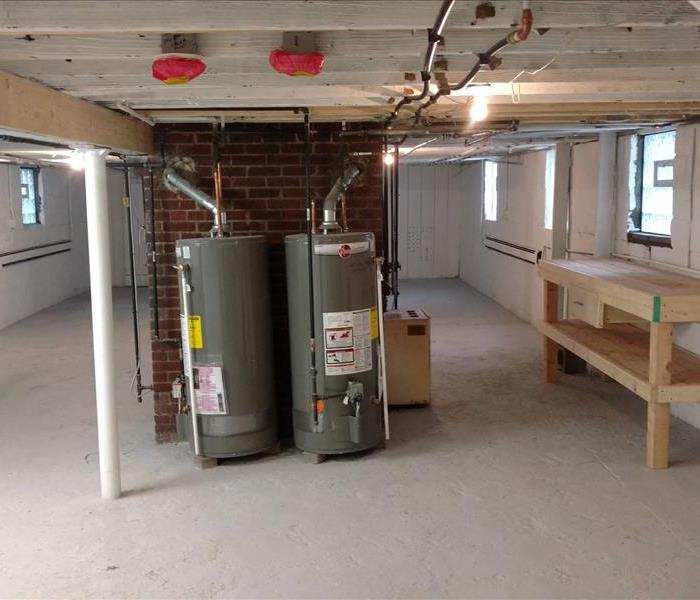 Let SERVPRO of West Seneca/Lancaster restore your belongings, instead of replacing them.
Let SERVPRO of West Seneca/Lancaster restore your belongings, instead of replacing them.
A common misconception that we see in our industry is that after a fire loss, it is less expensive to replace contents instead of restoring them. As a leader in the Fire Restoration Industry, SERVPRO of West Seneca/Lancaster is here to tell you that this statement is FALSE. Our skilled technicians are trained to see beyond this common misconception, and restore your valuables/contents to preloss condition.
The mitigation process after a fire loss yields excellent results at a cost effective price. The mitigation stops additional damage from occurring and reduces the loss, while the restoration process puts the items back to their preloss condition. For the best results, the mitigation process should begin as soon as possible (within 24 hours preferably). In order to guarantee the removal of smoke odor, all of the contaminated areas need to be cleaned, deodorized and possible sealed (where applicable). As well as all odor particles, whether airborne or absorbed, need to be neutralized. It’s important to note that some items, such as family air looms and photos, cannot be replaced. Thus, one more reason why restoring can be better than replacing after a fire loss.
So if your home experiences a fire, don’t believe the misconception that everything needs to be replaced. Let the experts at SERVPRO of West Seneca/Lancaster help restore your valuables and make it, “Like it never even happened."
Do You Have Fire Damaged Documents? We Can Restore That
7/15/2019 (Permalink)
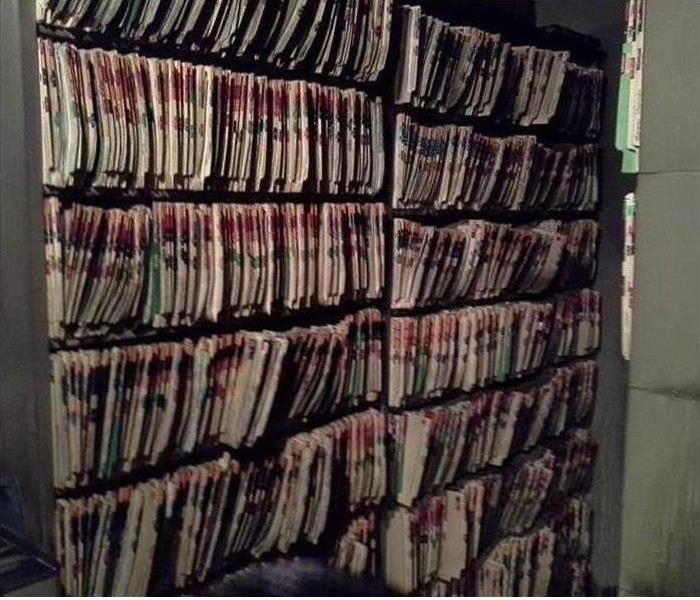 Don't stress over fire damaged documents, we can restore those.
Don't stress over fire damaged documents, we can restore those.
Picking up the pieces after a fire/water loss can be overwhelming and stressful. Realizing that your documents have been damaged from the loss is even worse! But good news, SERVPRO of West Seneca/Lancaster is always, “Here to help” and we can restore your fire/water damaged documents. We understand that there are several documents, whether they are for residential or commercial use, are important to you and cannot be replaced. These documents may even contain sensitive information that should not, or cannot be shared. Our Technicians are HIPAA compliant and are trained how to deal with sensitive information so they can handle these sensitive situations.
SERVPRO of West Seneca/Lancaster has a special process to handle fire and/or water damaged documents. We can pull the moisture and odor out using freeze-drying technology. However, it is important to start this process as soon as possible (if not immediately). So, if you have documents that are affected by fire and/or water we recommend that you put them in the freezer immediately, and call our office at (716) 674-1103. This service has helped several doctor’s offices and schools that are required to keep a paper copy of documents. So if you have documents that suffered water and/or fire damage let the experts at SERVPRO of West Seneca/Lancaster make it, “Like it never even happened."
Right Product, Right Equipment: Fire Damage Edition
7/13/2019 (Permalink)
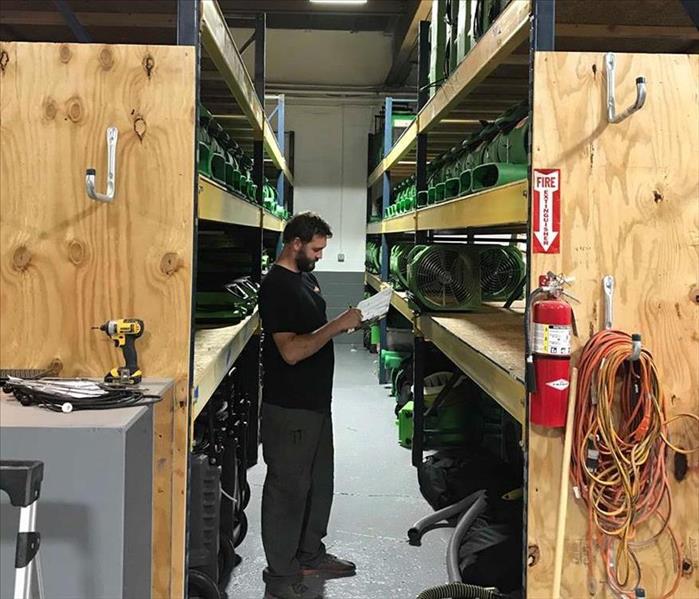 Having the right equipment and product to get the job done right is KEY when it comes to fire damage restoration.
Having the right equipment and product to get the job done right is KEY when it comes to fire damage restoration.
After suffering a fire, call the restoration company with the right equipment, team and products. These three things make all the difference when putting the pieces after a fire back together. SERVPRO of West Seneca/Lancaster has all three.
Our technicians are IICRC certified and are continually trained on the latest technologies in fire restoration. Each one of our professional crew members are trained to deal with the emotions and concerns our customers may have after a fire. They understand that this may be the most difficult time of your life, and know how to effectively assist you during this time. They will put together a comprehensive fire mitigation plan, but explain it in terms you understand so you always know what is going on. A crew is always on call 24/7 to help you after a fire.
The right equipment is a huge factor in fire restoration, and SERVPRO of West Seneca/Lancaster has it. We have the proper air scrubbers, dehumidifiers, soot cleaning equipment AND, all the necessary equipment to mitigate the water damage from the fire company. We have access to additional equipment from over 1,500 SERVPRO’s nationwide, should we need it. And, we are continually updating our equipment to make sure it is up to our standards.
And lastly, SERVPRO of West Seneca/Lancaster has the proper products needed for fire restoration. We have an on-site chemist located at SERVPRO headquarters who has custom created over 150 products that are specially designed to get the job done right. Each product comes with a MDS sheet so you know exactly what is being used in your home.
So if you experience a fire, trust the experts at SERVPRO of West Seneca/Lancaster to get the job done right! Someone is always available at (716) 674-1103.
Good News! We Can Now Clean Even MORE After A Fire!
7/13/2019 (Permalink)
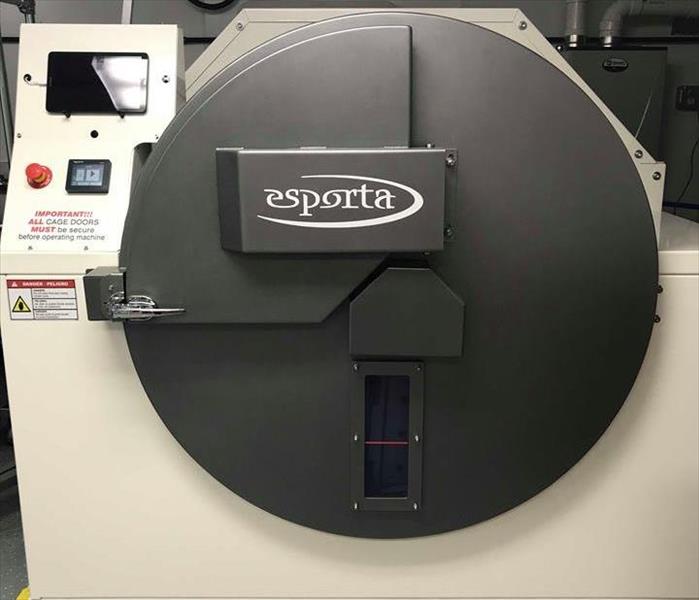 We can now clean up to 90% of soft goods after a fire loss.
We can now clean up to 90% of soft goods after a fire loss.
Here at SERVPRO of West Seneca/Lancaster, we know that after a fire can be one of the most devastating times of your life. Your whole world has been turned upside down, and items you cherished may seem gone forever. But, we have some exciting news to share with you. You already know SERVPRO of West Seneca/Lancaster can help you with the fire mitigation of your home, but now we can also help restore your soft content items and textiles!
That’s right! We can now offer in house textile restoration after a fire loss. So what types of things can we now clean? We can clean and restore:
- Stuffed animals
- Curtains
- Sports equipment
- Handbags and shoes
- Leathers
- Laundry
- And so much MORE
In fact, we can now restore and clean up to 90% of soft goods in the home! That is twice as much as a restoration dry cleaner can. AND, we can do it in as little as 48 hours. That is 48 hours closer to you feeling some sense of normalcy after a fire. So trust the best team around when it comes to restoring your home and valuables after a fire. Call SERVPRO of West Seneca/Lancaster at (716) 674-1103 today.
Fire Damage Do's and Don'ts
7/8/2019 (Permalink)
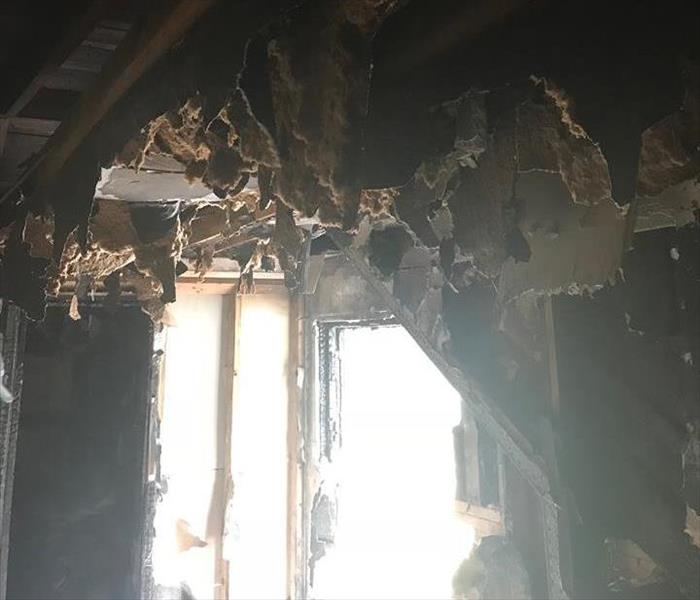 Be sure to know the do's and don'ts of fire damage!
Be sure to know the do's and don'ts of fire damage!
Suffering a fire can be one of the most devastating events a person can go through. It is not uncommon for our customers to want to feel some sort of normalcy immediately following the fire. And, while we completely understand this urge, there are some things you should NEVER do following a fire. Some of things include:
- NEVER attempt to was any walls or painted surfaces without contacting your SERVPRO professional first.
- NEVER attempt to shampoo carpets or upholstered furniture.
- NEVER attempt to clean any electrical appliances, TV sets, radios, etc. that may have been close to fire, heat or water.
- NEVER use any canned or packaged food or beverages that may have been stored close to fire, heat or water. They may be contaminated.
- NEVER turn on ceiling fixtures if ceiling is wet. Wiring may be wet or damage.
- NEVER send out any garments that suffered smoke damage to an ordinary dry cleaner. Improper cleaning may set in smoke order or damage them.
It is important to never try to clean smoke or soot damaged items yourself, as using the wrong product on them may further damage them. We understand the urge to need to start the cleaning process following a fire, so we recommend the following:
- DO limit movement in the home to prevent soot particles from being embedded into upholstery and carpets.
- DO keep hands clean. Soot on hands can further ruin upholstery, walls and woodwork. We recommend wearing disposable gloves.
- DO blow or brush vacuum loose soot particles from upholstery, drapes and carpets.
- DO place old towels or liners on rugs, upholstery and carpet traffic areas.
- DO empty freezer and refrigerator completely and prop doors open if the electricity is off.
- DO clean and protect chrome on kitchen and bathroom faucets, trim and appliances with a light coating of Vaseline or oil.
- DO wash house plants on both sides of leaves.
- DO change the HVAC filter.
- DO tape double layers of cheesecloth over air registers.
And the MOST important thing you should do if you suffer a fire is call the experts at SERVPRO of West Seneca/Lancaster once you and your family is out safely and your property is secured. Someone from our office is available 24/7 at (716) 674-1103 to assist you and help make this devastating time, “Like it never even happened."
Multiple Types of Soot, Oh My!
7/8/2019 (Permalink)
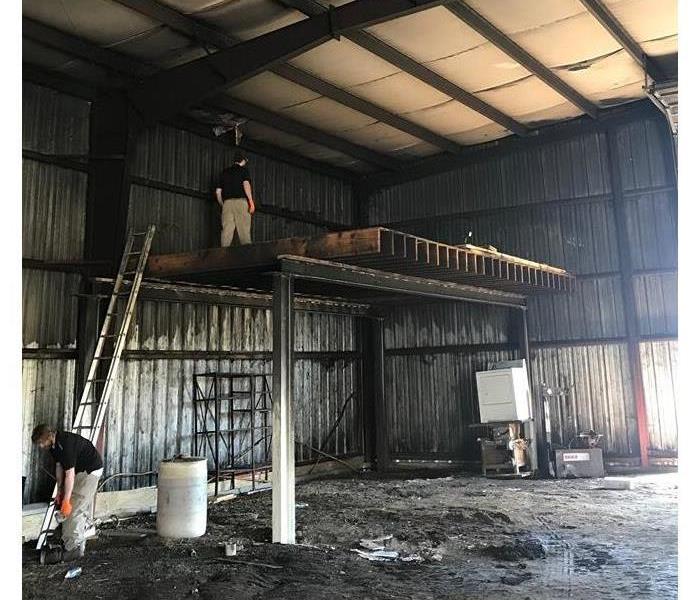 Different types of soot require different cleaning methods. It is important to know and understand them before attempting to clean up after a fire.
Different types of soot require different cleaning methods. It is important to know and understand them before attempting to clean up after a fire.
Did you know there are several types of soot? It’s true, that is why it is so important to never try to clean up after a fire yourself. Each type of soot requires a different cleaning process and product. There are actually 5 different types of soot. They are:
- Wet Smoke- Wet smoke residues result from water being used to extinguish the fire from either the fire department, a sprinkler system or from smoldering fires with low heat. These residues are smeary and have a pungent smoky/musty odor. They usually require wet cleaning to be removed.
- Dry Smoke- Dry smoke residues result from a fire source that is more combustible or fast burning such as wood and burns at higher temperatures. These residues can also be caused with a furnace puff back. They are often dry, powdery and are small, non-smeary smoke particles that require a dry cleaning process BEFORE wet cleaning. They are the easiest to remove.
- Oily Smoke- Oily smoke residues result from grease fires, burned plastic and fuel oil furnace backups. Also, this type of soot can be from heavy nicotine build up before the fire damage even occurred. This type of soot is smeary, and usually requires additional cleaning steps to remove. Oily soot is resistant to water based cleaning.
- Protein Soot- This type of soot results from burned meat or eggs, such as cooking a chicken on the stove overnight. The residue is virtually invisible and can penetrate into all surfaces such as paints, floor coverings, wood and plastics. This type of soot has an extremely pungent odor, and it is the most difficult odor to eliminate.
- Other Types of Residues- Other types of residues that need to be cleaned properly include tear gas, fingerprint powder, pepper spray and fire extinguisher residues.
As you can see, each one of these types of soot requires a different cleaning method and product. So let SERVPRO of West Seneca/Lancaster take the guessing work out of cleaning after a fire. Our trained and professional technicians have the tools and knowledge to decipher which type of soot is present, and which cleaning method is needed to make it, “Like it never even happened."




 24/7 Emergency Service
24/7 Emergency Service












